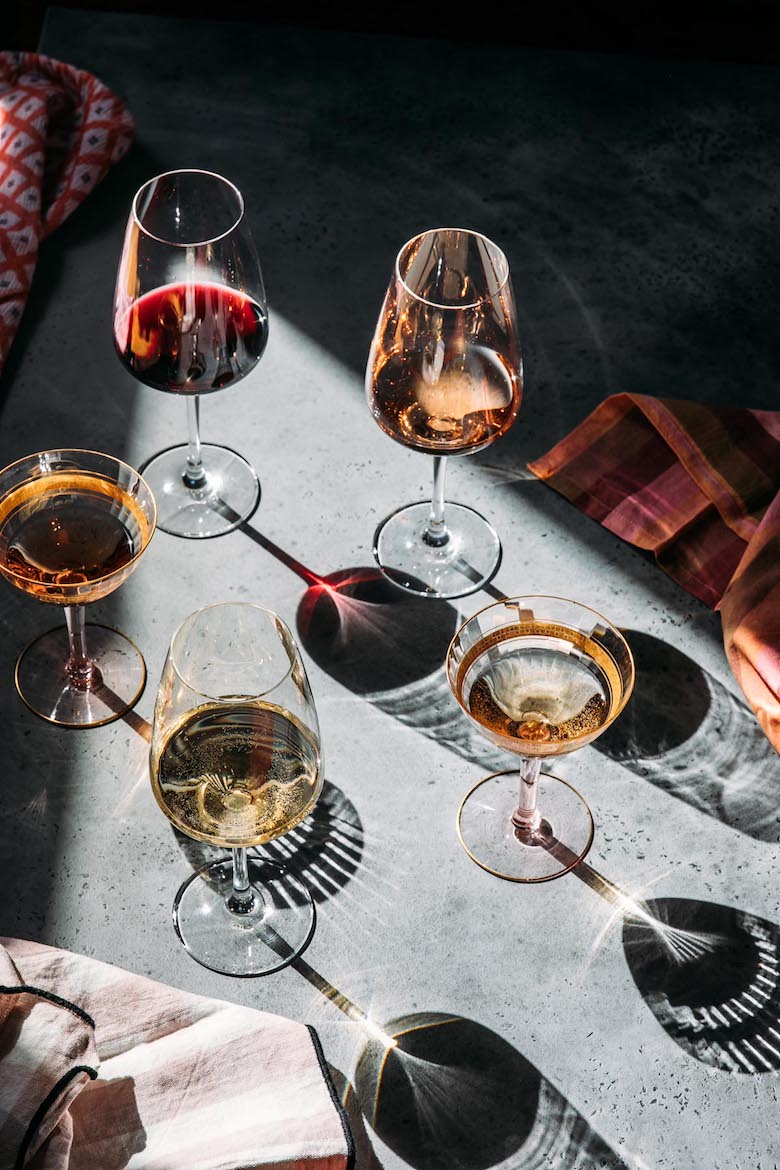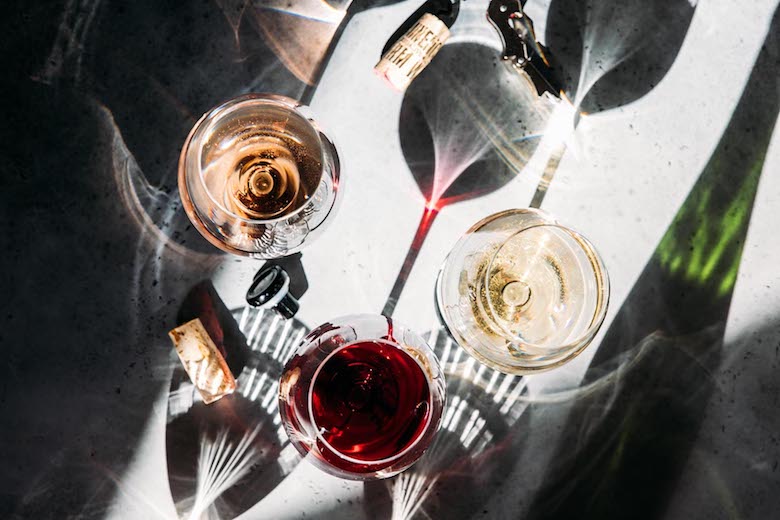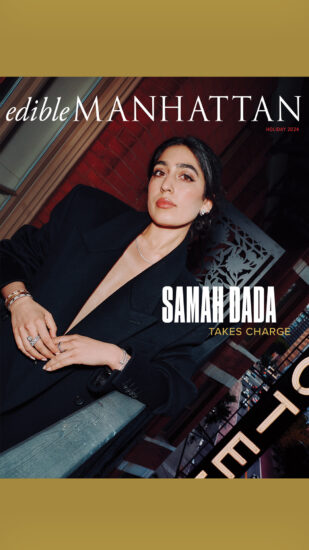Young wine regions are often criticized for lagging on the learning curve; for immaturity, newbie-ish mistakes in judgment and questionable reasoning for even trying to make wine in the first place. And natural winemaking? Well, there are many who would say that: “Here, it simply isn’t possible.”
You could argue that this is kind of missing the point (and the good part!) of having a front-row seat to a region’s work and growth, though; to finding out how that wine-producing area can express its lands via the vehicle of a crushed, fermented grape. Comparisons to other, old-world wine regions are often seen as Big Compliments, and while those nods can give you some helpful orientation when you’re trying to understand what’s in your glass, it can also just be plain futile. Who cares if a hybrid grape from Vermont tastes like an aligoté from Burgundy? Or a New York cab franc is a dead ringer for a Chinon from the Loire? It’s not.
It is, however, its very own, beautiful, unique thing—right here, right now. And you might say that it’s a large part of what the natural wine movement in the Northeast is all about.


“There is a new awareness that working with less intervention is not just something that’s done in France or Italy, but something that is sustainable for more growers in New York and the Northeast,” says Lucy Huffman, general manager and buyer for Uva Wines in Williamsburg, Brooklyn, a store that focuses on natural, organic and biodynamic small production wines. “Pioneers like Bloomer Creek have been proving it possible for over 30 years.”
Certainly the Northeast is not the first place one might expect to find a bunch of winemakers making a good, if not heralded, go of natural wine production. Humidity, hurricanes, rain, hail, mildew, rot, vineyard critters and all other maladies that can muck up your vines and fruit certainly up the difficulty level of non-interventionist winemaking here. So much so, the notion of engaging in it might seem more like California dreamin’.
Read more: Is Canning the Secret Weapon of New York Wine?
And yet, it’s happening. Producers like Bloomer Creek in the Finger Lakes, Liten Buffel in western New York’s Middleport, Wild Arc and Eminence Road in the Hudson Valley and La Garagista in Vermont are bona fide natural winemaking operations. Others, like Heart & Hands and Red Tail Ridge in the Finger Lakes are following—if not entirely then as often as possible within the confines of keeping an agricultural business going in a difficult climate—a hands-off model and mindset. And organic growers like Rex Farr on Long Island, as well as the sustainably minded Steve Shaw of Shaw Vineyards and Peter Martini of Anthony Road in the Finger Lakes, both make wine and supply grapes to others who are picky about provenance.
It is, however, its very own, beautiful, unique thing—right here, right now. And you might say that it’s a large part of what the natural wine movement in the Northeast is all about.
Others, like, the Hudson Valley’s Matthew Spacarelli of Fjord and Benmarl, and on Long Island, Joe Macari, who strives to farm biodynamically as much as possible, as well as Bedell’s Rich Harbich, who spearheaded the Long Island Sustainable Winegrowing program, and more who are working toward a level of sincere sustainability to prove that, yes, it’s possible to play nicely with Mother Nature instead of trying to wrestle her to the ground and give her a facelift.
Read more: The 6 Must-Visit Wineries for Long Island Wine Country First-Timers
“Growing grapes in a cool climate like the Finger Lakes causes problems but also creates the ability to make a wine with a lot of personality that also is not redundant from season to season. Being a natural wine producer, it just needs a smaller scale than what the global wine world is about at the moment,” says Debra Bermingham, co-owner with her husband, Kim Engle, of Bloomer Creek Vineyard in the Finger Lakes. Engle is the winemaker, and both he and Bermingham work countless hours in their vineyards, 10 acres on Cayuga Lake and another 8 planted (out of 12) on Seneca.


The duo, who make and grow riesling, pinot noir, cabernet franc, grüner veltliner, and chardonnay, established their winery in 1999. Although they’ve been farming chemical-free in the area for over 30 years, it was in about 2008 that they began to adhere strictly to the tenets of the natural winemaking movement: no pesticides or herbicides or weed killers (Engle plants buckwheat and rye to control weeds but keep the nutrients in his soil healthy, for instance); ambient yeast; no fining or filtering the wines before bottling them; no heavy barrel programs or (sacré bleu!) oak chips or oak powder or any other additive to mold the flavor of what’s already, naturally, in the grapes.
“It ends up a really thrilling moment every harvest to see that terroir is definitely making the flavors very distinct and unique to each site,” Bermingham continues.
“The way we make our wine embraces vintage variation and glorifies it.”
Which is, of course, far from easy—not only because of the work and risk involved but because you’re aiming at a small audience who embraces change over same-old consistency, and hopefully also trying to convert some of the latter into the former. But it’s hard to argue with the results—the purity of the fruit, the rollercoaster ride of flavor. These are not happy accidents; they are merely the results of a different tool kit from that of conventional winemaking.


“Sometimes ambient yeast gets the job done quick; sometimes fermentations kind of putter. I still have ’17s that aren’t done fermenting,” says Andrew Scott of Eminence Road Winery in the Hudson Valley’s Long Eddy. Scott and his wife, Jennifer Clark, grow hybrid grapes—crosses between American native lambrusca grapes and European Vitis vinifera grapes, like chardonnay—and use them, and the wild yeast that clings to their skins, to make small starter fermentations that will kick off the ferments of the wines they make—stunning, fresh, bright, terroir-driven pinot noir, riesling, cabernet sauvignon, chardonnay, gewürztraminer and cabernet franc. They buy their fruit from growers in the Finger Lakes with whom they have close partnerships and who work in the methodology that jibes with Scott’s hands-off ethos.
The audience for these wines is a small and curious one, to be sure. But it fits—not just with the availability of production (a few thousand cases a year is pretty standard from most of these producers) but in the way the winemakers want to engage with those who like their wines. At a tasting at Chambers Street Wines one recent Wednesday night, Scott stood behind a small table, four bottles in front of him, deep in conversation with a woman discovering his pretty pinots for the first time and marveling at how different they each tasted—both from plots on Seneca Lake, but several miles apart. After she walked away, bottles in hand, two young women approached—new to wine, but curious. They tried his orange-blossom-scented racy riesling, and you could see the light go on. “Oh!” one said. “I didn’t think I liked riesling, but this is really good.” And so Scott talked some more, about where the grapes were grown, how he makes the wine, about what riesling is.
“I love seeing our customers connect the place to what’s in their glass. To know where it came from and how it’s made,” says Huffman. “Natural wine is an umbrella term, there are many different aspects in the whole you can focus on. For us, it means you want to know more about the processes used to make the wine, which could mean what growers are putting on the vines or what they’re adding to the wine during the process. It means the customer is looking for more information about how the wine is being made, [and] we try to provide as much information as we can by knowing the products we select for the shop.”


It also means a deeper connection for the consumer—to the winemaker, to the wine and to the land it comes from.
“I think the best way to define what we do is a throwback to our Irish heritage—it’s what I’d define as shepherding. It rides a line of being more aware of identifying what are the wolves on the outside of the field and trying to set the flock in a direction with minimal effort to a very happy place,” says Tom Higgins, who, with his wife, Susan, owns and runs Heart & Hands on Cayuga Lake in the Finger Lakes, well known for the pinot noir, but also riesling, cabernet franc and, more recently, chardonnay. “The exciting thing about wine is there are always those who can teach you if you’re willing to listen. And the vineyard tells you a lot.”



